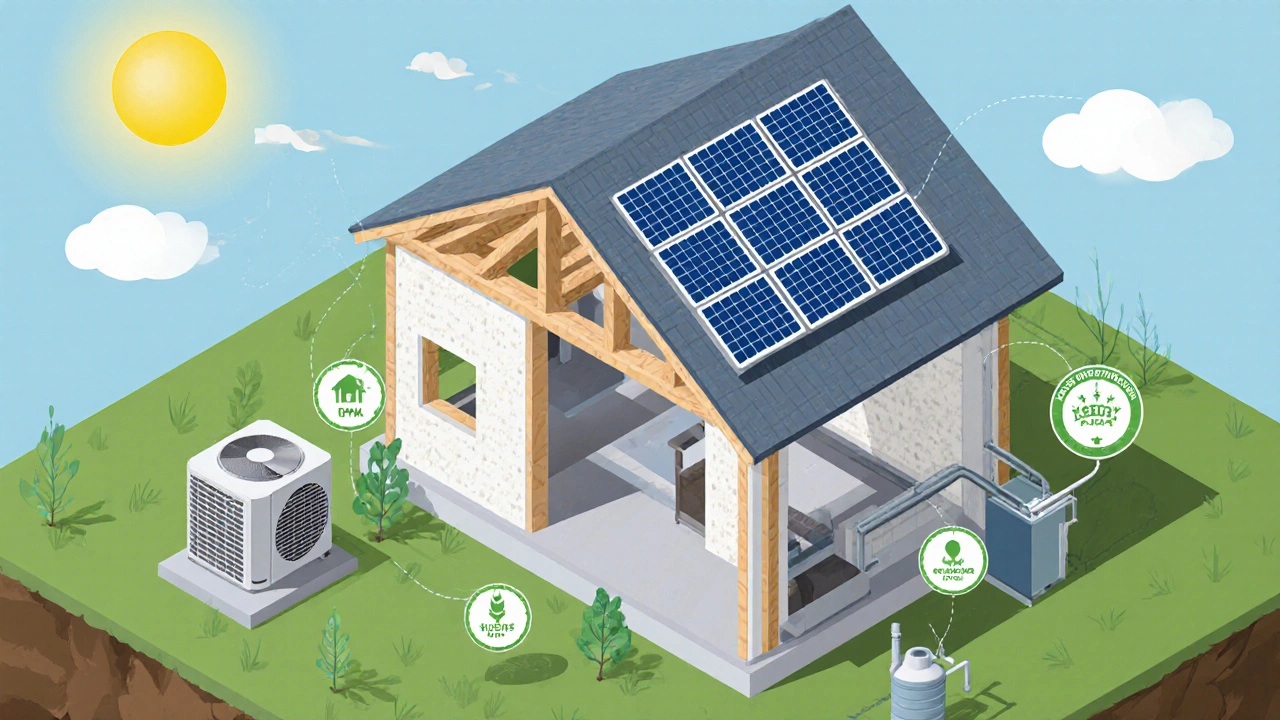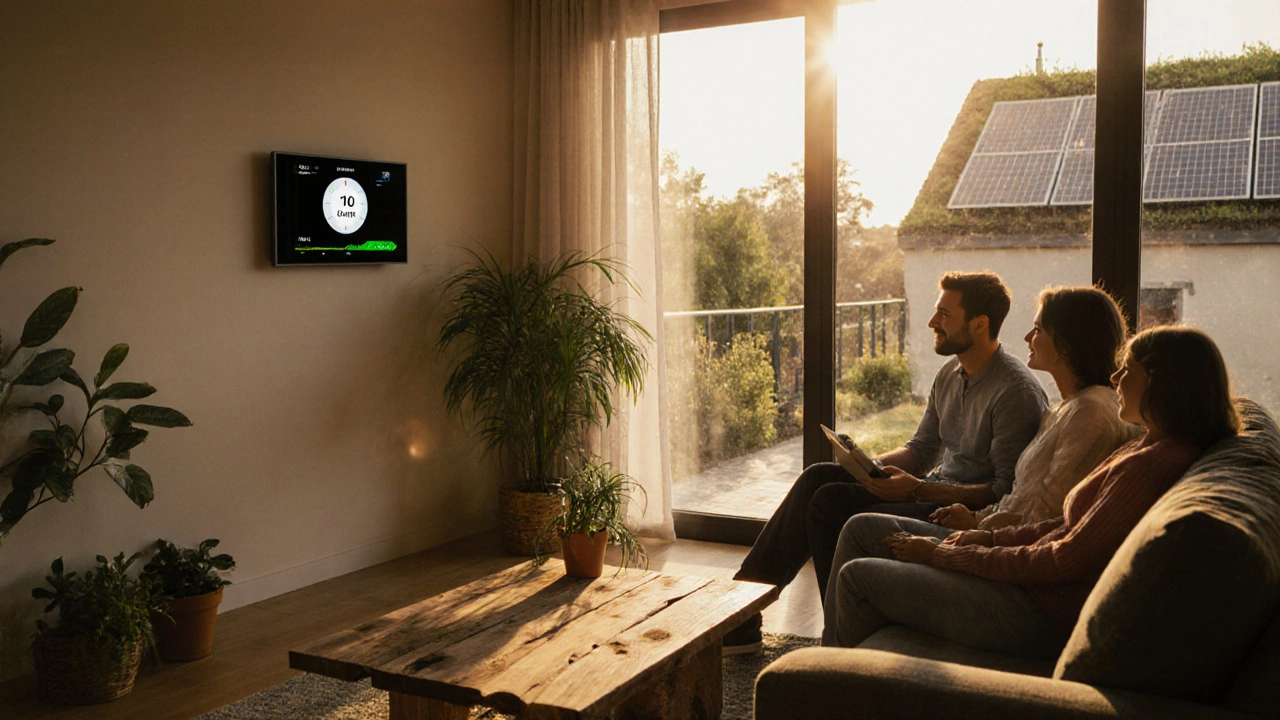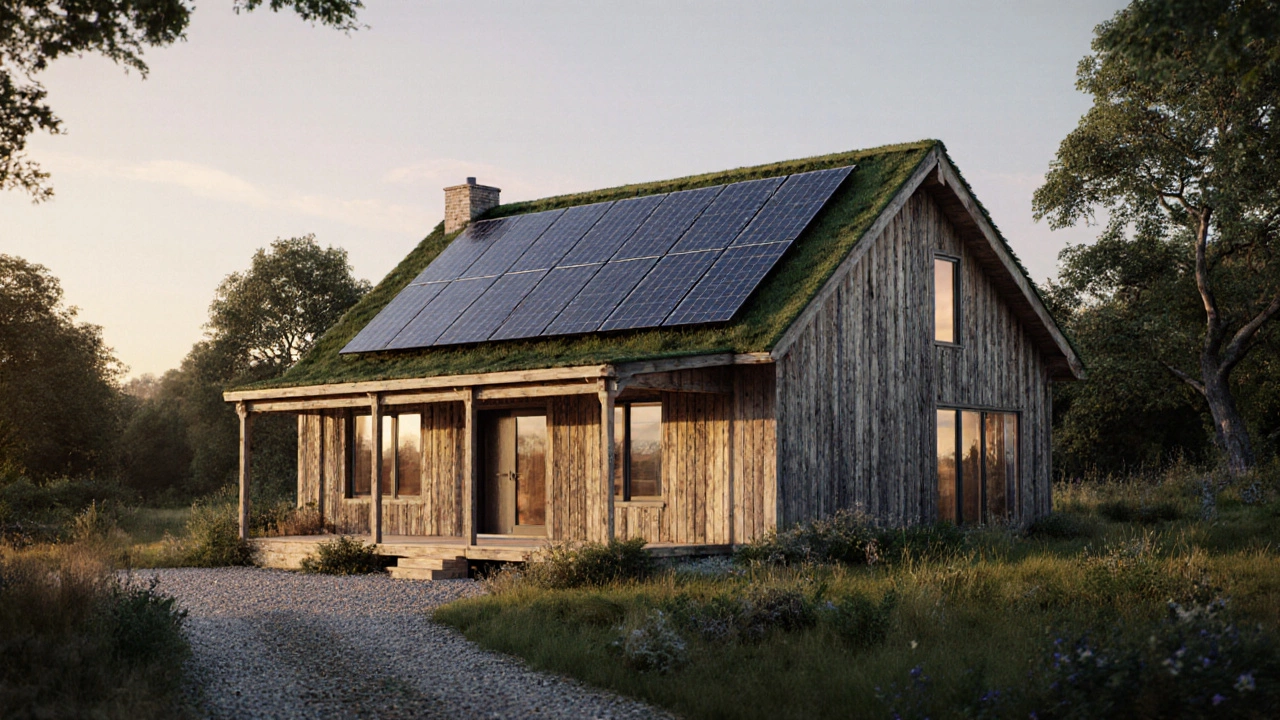Eco‑Friendly Home Cost Calculator
Savings Analysis:
Total Premium:
Annual Savings: $0
Payback Period: 0 years
Based on 2025 US averages:
Conventional cost: $150/sq ft | Green premium: 15-25%
Enter your home details to see your savings potential.
Ever walked past a sleek timber‑clad cottage and wondered why the price tag seems higher than a regular build? That’s the reality for many buyers curious about eco-friendly house cost. While the headline numbers can look intimidating, breaking down the factors reveals where the premium comes from and how you can keep it in check.
What Exactly Is an Eco‑Friendly House?
Eco-friendly house is a residential building designed to minimize environmental impact through energy‑efficient systems, sustainable materials, and reduced waste. It isn’t just a style; it’s a collection of strategies that work together to cut carbon footprints and, over time, lower utility bills.
Key Cost Drivers
Three big buckets drive the price difference between a green home and a conventional one:
- Materials: Certified timber, recycled steel, and high‑performance insulation often cost more upfront.
- Systems: Solar photovoltaic arrays, heat pumps, and rain‑water harvesting require extra investment.
- Design & Certification: Passive solar design, net‑zero planning, and LEED certification add design fees and documentation costs.
Materials That Add Value (and Cost)
Sustainable timber is wood sourced from responsibly managed forests, often certified by FSC or PEFC, providing lower embodied carbon and a healthier indoor environment typically runs 15‑25% higher than standard softwood. When you combine it with Insulated concrete forms (ICF) are hollow foam blocks that stay in place while concrete is poured, delivering superior thermal mass and airtightness, the price per square foot can climb another $30‑$45.
These materials pay off through better insulation values (R‑20+ walls) and durability, meaning fewer repairs over the building’s life.
Energy Systems That Cut Bills
A Solar photovoltaic (PV) system converts sunlight into electricity, offsetting grid consumption and often qualifying for tax credits adds roughly $12,000‑$20,000 for a 5kW array in 2025. Pair that with an Heat pump an electric system that moves heat rather than generating it, delivering up to 300% efficiency for space heating and cooling, and you’re looking at $8,000‑$12,000 more. While the upfront spend rises, annual energy bills can drop by 50‑70%, shortening the payback period to 7‑10 years in many climates.

Design Strategies That Reduce Heating Loads
Passive solar design optimizes building orientation, window placement, and thermal mass to capture sunlight in winter and shade it in summer doesn’t add a direct cost if integrated early, but it does demand more design time-usually a 5‑10% increase in architect fees. The benefit? Substantially lower heating demand, sometimes eliminating the need for a backup furnace.
Achieving Net-zero energy status means the home produces as much renewable energy as it consumes over a year often requires combining high‑performance envelopes, renewable systems, and smart energy management. The net‑zero label can boost resale value by 5‑10% and may qualify for government incentives.
Certification and Its Price Tag
Obtaining LEED certification a globally recognized green building rating system that awards points for energy efficiency, water savings, and material selection typically adds $5,000‑$15,000, depending on the level (Certified, Silver, Gold, Platinum). While not required to build a green home, many buyers see it as a marketable badge that speeds up sales and can unlock financing perks.
Putting Numbers on the Table
| Feature / Component | Conventional Cost | Eco‑Friendly Add‑On | Total Eco‑Friendly Cost | Notes |
|---|---|---|---|---|
| Base construction (per sqft) | $150 | + $30‑$45 (ICF, high‑R insulation) | $180‑$195 | Improved thermal performance, airtightness |
| Roofing | $8,000 | + $4,000 (green roof system) | $12,000 | Insulation, storm‑water management |
| Windows (energy‑rated) | $10,000 | + $2,500 (triple‑pane, low‑e) | $12,500 | Reduces heating/cooling load |
| Solar PV (5kW) | $0 | $15,000 | $15,000 | Federal tax credit 30% (2025) |
| Heat pump system | $5,000 | + $7,000 | $12,000 | Higher efficiency than furnace |
| LEED certification | $0 | $10,000 | $10,000 | Marketability & financing perks |
Adding up the line items, a 2,200sqft home that would cost about $330,000 to build conventionally might land around $380,000‑$410,000 after green upgrades. That’s roughly a 15‑25% premium. However, the long‑term savings-lower energy bills, tax credits, and higher resale value-can shrink the effective premium to single digits.
Strategies to Lower the Premium
- Plan early: Integrate passive solar orientation and thermal mass from the schematic stage; retrofitting later can double costs.
- Leverage incentives: In 2025 the federal solar tax credit is 30%, many states offer rebates for heat pumps and green roofs.
- Choose incremental upgrades: Start with high‑R insulation and efficient windows, then add solar PV as budget allows.
- Consider modular certifications: A basic ENERGY STAR rating costs less than full LEED Platinum but still adds credibility.
- Work with experienced builders: Firms that specialize in sustainable construction avoid costly change orders.

Regional Cost Variations
Location matters. Sun‑rich states like Arizona or California see faster solar ROI, sometimes making PV a net‑zero expense after 5‑6 years. In colder northern climates, the heat pump and high‑performance envelope dominate savings. Urban areas with higher labor rates also push the base cost up, while rural projects can benefit from lower land and permitting fees.
Real‑World Example: A Mid‑Size Cottage in Vermont
A client commissioned a 1,800sqft cottage using reclaimed barn wood, ICF walls, a 4kW solar array, and a ground‑source heat pump. Base construction cost: $270,000. Green add‑ons added $50,000. After applying a 30% solar tax credit ($6,000) and a state heat‑pump rebate ($5,000), the out‑of‑pocket price settled at $309,000. Annual utility bills dropped from $2,800 to $800, delivering a payback in roughly 9 years.
Bottom Line: Is It Worth It?
If you’re buying purely for short‑term resale, the 15‑25% premium might feel steep. But for owners who plan to live in the home for 10+ years, the combination of lower operating costs, healthier indoor air, and future‑proofing (e.g., grid‑independence) usually makes the investment sensible.
Frequently Asked Questions
What is the average price of an eco‑friendly house in 2025?
Across the U.S., a green home typically costs 15‑25% more than a comparable conventional build. For a 2,200sqft house, that translates to an additional $50,000‑$80,000 on top of the standard $330,000 price.
Do government incentives cover most of the extra cost?
In 2025 the federal solar tax credit covers 30% of PV costs, and many states add rebates for heat pumps, green roofs, or certified materials. Combined, these incentives can shave $10,000‑$20,000 off the premium, but you still need to budget for the remaining upgrade fees.
How long does it take to recoup the extra investment?
Payback periods vary by climate and energy prices. In sunny regions, solar and heat‑pump combos can break even in 6‑8 years. In colder areas, expect 9‑12 years. After that, the home essentially pays for itself through saved utility bills.
Will an eco‑friendly house sell for more?
Studies in 2024‑2025 show green homes command a 5‑10% premium on resale, especially in markets where buyers value sustainability. Certification badges like LEED or ENERGY STAR further boost perceived value.
What are the biggest mistakes first‑time buyers make?
Waiting until the design phase to add green features, ignoring local climate in passive‑solar planning, and overlooking available rebates are the top pitfalls. Early collaboration with a sustainability‑focused architect prevents costly redesigns.
